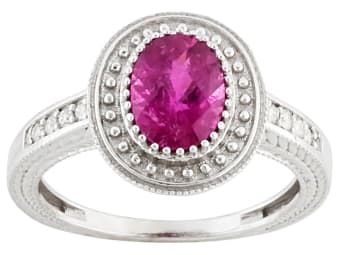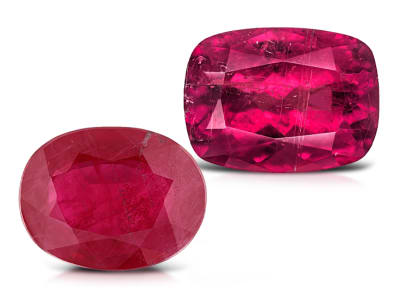Ruby and rubellite can be quite confusing to tell apart because they almost sound the same and exhibit similar shades of red hues. It’s common for people to wonder if these two treasures are the same gemstone with two different names, or if they are “sister” stones from the same gemstone family. The truth is they are two different gemstones. The similarities between these gemstones end with their names and their colors, as ruby and rubellite are entirely different gemstones with unique stories.
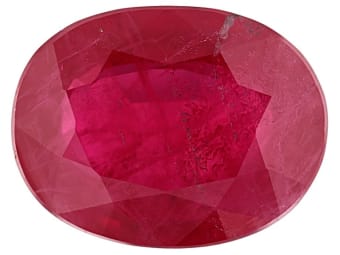
What is ruby?
Ruby is the red variety of corundum and has been highly valued as one of the most popular gemstones for centuries. Because it’s a nine on the Mohs Scale of Hardness, it’s safe to wear as jewelry or to be placed in a display. This is due to ruby not easily being scratched by dust or other objects. In fact, ruby is only second to diamond in hardness.
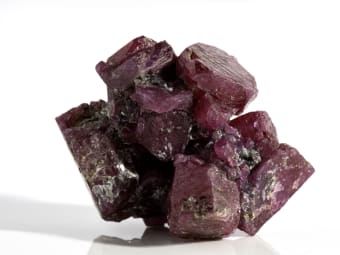
According to the Gemological Institute of America (GIA), ruby is “one of the most historically significant colored stones.” It doesn’t take a trained gemologist to know that though. Ruby is mentioned repeatedly in the Bible, featured in the coronets and scepters of royalty, and worn by many celebrities today. Lastly, the name ‘Ruby’ comes from the Latin word, ruber, which means, “red”. In ancient Sanskrit it is ratnaraj, meaning “King of Precious Stones.”
Did you know... Ruby is known as one of “The Big Three”, the most popular group of gemstones that include ruby, sapphire and emerald.
What is rubellite?
Rubellite is a pink to red variety of elbaite tourmaline. The name is derived from a Latin root meaning reddish, and it is one of the most treasured tourmaline in its family for its exceptional color. Mother Nature is stingy with beautiful reds. Purists believe the designation rubellite should be applied only to tourmalines that exhibit a true red color under incandescent or natural light sources. In practice, the term is applied to stones that are pink or deep pink to reddish. Rubellite is also a seven to a seven-and-a-half on the Mohs scale, different from ruby’s rating of nine.
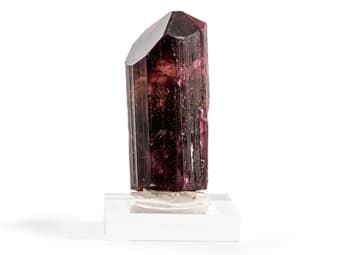
Because of their similarity in color, rubellite was mistaken for ruby for many centuries. In fact, Peter the Great (1672 – 1725) commissioned “ruby” jewelry, that was later found to be rubellite, for the Imperial Court of Russia. Because of this, rubellite may be said to keep very fine company. Lastly, most gemologists will agree that properly using gemological equipment is the best way to identify a gemstone.
How can you tell the difference?
Both rubies and rubellites are valued for their lack of inclusions and strength of color. However, most have unique markings (inclusions) within them, which allows gemologists to distinguish one from the other. Ruby and rubellite can have different types of inclusions from each other. Ruby can have fine needle like inclusions that feature rutile or other minerals and are referred to as ‘silk’ while rubellite and other tourmaline can include fine fluid inclusions which are often joined together to form a unique weblike pattern which gemologists call ‘trichites’ (trickites).
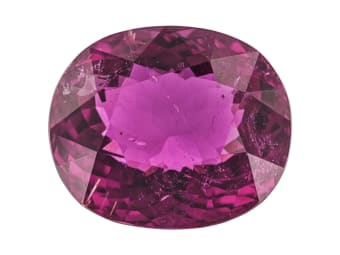
There are slight differences in color between ruby and rubellite that set them apart as well. A refractometer is a great tool to find both gemstones’ refractive indexes. The refractometer measures the amount of bending of light that occurs in each gemstone. Most gemologists will agree that properly using gemological equipment is the best way to identify a gemstone. It’s always wise to ask an expert and to shop with jewelers known for their skill and honesty, especially for gemstones like ruby and rubellite.
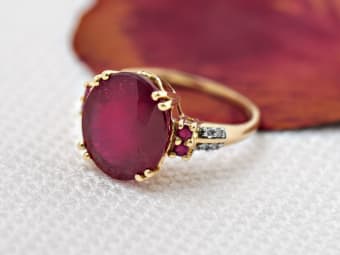
Did you know... Ruby and sapphire are both made of corundum. Ruby is a red corundum while sapphire appears in every other color of the rainbow.
Conclusion
There are some similarities between ruby and rubellite, but they are distinctly different stones with their own chemical structures and optical properties. Ultimately, ruby and rubellite are both desirable, beautiful, rare in their finest forms, ultra-wearable and designed by Mother Nature to give jewelry lovers and gem collectors lasting enjoyment.
